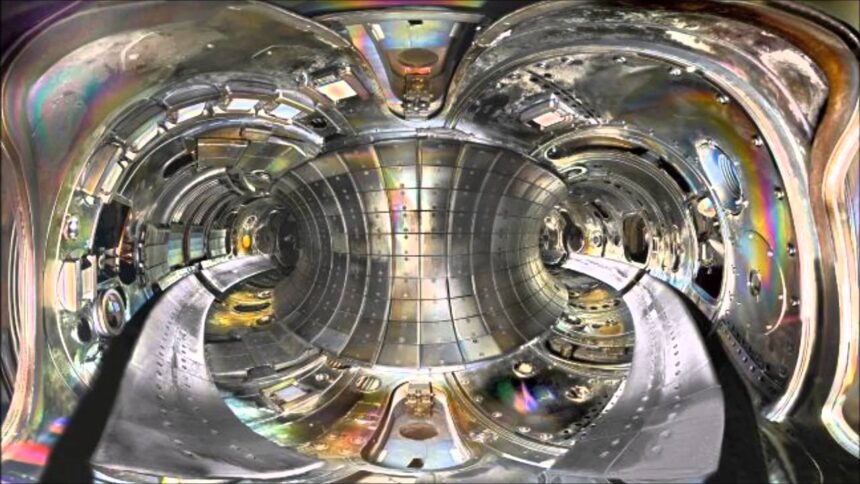At the heart of the global push to unlock clean, limitless energy lies ITER — the world’s largest fusion experiment, based in southern France. Backed by a consortium of 35 nations, ITER (International Thermonuclear Experimental Reactor) aims to replicate the energy source of the sun to generate sustainable electricity. And while the scientific effort is monumental, it’s increasingly the private tech sector that’s accelerating its path forward — especially through innovations in artificial intelligence (AI), advanced simulation, and smart materials.
A Race Against Time — and Complexity
ITER’s fusion goal is deceptively simple: heat hydrogen isotopes to 150 million°C (ten times hotter than the sun), hold them in place using magnetic confinement, and capture the energy released. But this process involves unprecedented technical complexity, requiring atomic-level precision, massive data analysis, and real-time adjustments.
This is where AI and machine learning are now stepping in as game-changers.
“The level of control needed to manage the plasma inside the tokamak is staggering,” says Dr. Luca Moretti, AI systems lead at ITER. “Traditional programming can’t adapt fast enough. We’re now relying on private-sector AI models to predict, respond, and optimize in real time.”
Private Sector: From Silicon Valley to the Core of Fusion
In recent years, major tech companies and startups have partnered with ITER to contribute cutting-edge solutions:
🔹 Google DeepMind & Predictive Plasma Control
DeepMind has been instrumental in developing AI models that anticipate plasma instability, one of the key risks in fusion reactions. Its deep reinforcement learning algorithms are now being used to simulate millions of control scenarios, allowing scientists to fine-tune magnetic confinement parameters.
🔹 IBM & Quantum-Enhanced Simulations
IBM has deployed its hybrid classical-quantum computing framework to simulate the complex behavior of plasma particles — enabling faster iteration on design and safety protocols.
🔹 Siemens & Smart Sensors
Siemens has provided a network of industrial-grade sensors and digital twins that monitor the internal conditions of the reactor with microscopic precision. These systems allow engineers to detect structural weaknesses, heat fluctuations, and anomalies before they become dangerous.
🔹 Palantir & Big Data Integration
Palantir’s data integration platform is helping unify the enormous volume of sensor data, experimental results, and historical performance logs into a centralized decision-making dashboard used daily by ITER engineers.
Why AI Is a Game-Changer for Fusio
The biggest challenge in nuclear fusion is control and consistency. The plasma must remain confined and stable for several minutes — a feat never before achieved on ITER’s scale. AI offers several advantages:
- Real-Time Feedback: AI can make millisecond decisions on magnet adjustments and cooling flows.
- Predictive Maintenance: Machine learning models predict which reactor components are likely to fail, reducing downtime.
- Efficiency Optimization: Algorithms identify the most energy-efficient reactor conditions, saving millions in operational costs.
Private Investment Fuels Public Ambition
What’s unique about ITER’s model is that it’s publicly led but privately powered. As the climate crisis intensifies and energy demands skyrocket, the fusion race has gained commercial urgency.
“We’re seeing a shift from government-only science to a more hybrid model of state and startup,” notes Caroline Lefevre, a clean tech analyst at the OECD. “Private players bring speed, risk-taking, and innovation — without which ITER could stall.”
Looking Ahead: Fusion at Scale
ITER is not expected to generate actual power until the early 2030s, but its success would pave the way for commercial fusion reactors across the globe. Already, companies like Helion, Commonwealth Fusion Systems, and Tokamak Energy are preparing for commercialization — often using breakthroughs first tested at ITER.
The success of these efforts hinges on what’s happening now: a deep integration of AI, data science, and private ingenuity with one of the most ambitious scientific collaborations in human history.
Conclusion: A New Model for Innovation
The collaboration between the private tech sector and public fusion research at ITER reflects a broader transformation in how the world tackles grand challenges — blending government coordination with tech-sector velocity.
“Fusion is no longer science fiction,” said Dr. Moretti. “Thanks to AI, it’s becoming a science fact — faster than we imagined.”












